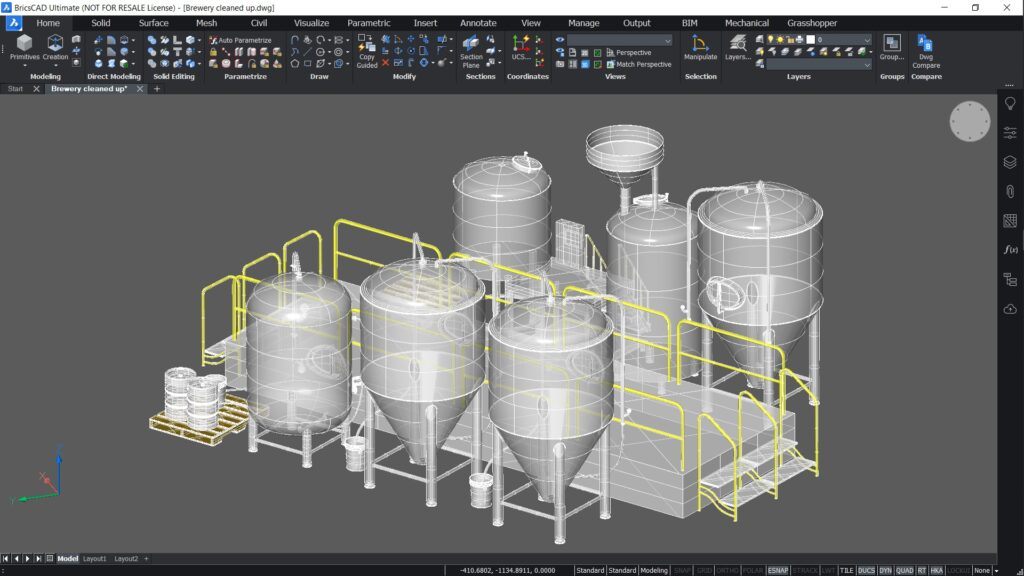
When it comes to power-hungry applications, nothing beats the precision and efficiency of a well-crafted fanless mini PC. For professionals in the field of 3D CAD, these compact, silent wonders have become the go-to solution for demanding tasks. Whether you’re a designer seeking to optimize your workflow or a developer in need of a reliable tool, a fanless mini PC can be the game-changer you’ve been waiting for. But with so many options on the market, it can be overwhelming to decide which one best suits your needs. In this article, we’ll explore the top fanless mini PCs for 3D CAD applications, highlighting their key features, performance, and value for money. From the Akasa A-ITX49-M1B, praised for its sleek design and robust performance, to the Beelink Celeron N5095, lauded for its energy efficiency and quiet operation, we’ll dive into each model’s strengths and weaknesses to help you make an informed choice. So, let’s get started on this exciting journey to discover the most powerful fanless mini PCs for your 3D CAD needs.
For designers and engineers working with demanding 3D CAD applications, a reliable and powerful computer is essential. However, the traditional desktop setup can be cumbersome and may not always provide the necessary portability and performance. Fanless mini PCs offer a compelling solution, providing the power and versatility required for these applications without the noise and heat of traditional fan-based systems. In this article, we will explore the key features and benefits of fanless mini PCs, highlighting their suitability for demanding 3D CAD applications.
Why Fanless Mini PCs Are Ideal for 3D CAD Applications
Fanless mini PCs are designed to operate efficiently and quietly, making them an ideal choice for environments where noise is a concern, such as offices, studios, or homes. Their compact size allows for easy placement and integration into existing setups, whether it’s a workstation or a portable setup. These systems are also highly energy-efficient, which is important for reducing environmental impact and operating costs.
Key Features of Fanless Mini PCs
- Compact Design: Fanless mini PCs are designed to be small and lightweight, making them easy to move and set up anywhere. This portability is particularly useful for designers and engineers who need to work on-site or in different locations.
- High Performance: Fanless mini PCs are equipped with powerful processors and GPUs, ensuring that they can handle demanding 3D CAD applications without lag or stalls. This performance is crucial for tasks such as rendering, simulation, and animation.
- Durability: Fanless systems are designed to be robust and resistant to damage, which is important for environments where they may be subject to rough handling.
- Noise Reduction: As their name suggests, fanless mini PCs operate without fans, which means they produce virtually no noise. This is ideal for those who work in quiet studios or need to focus without distractions.
- Cooling Mechanisms: Fanless systems use alternative cooling mechanisms such as heat sinks and liquid cooling, which are more efficient and quieter than conventional fans.
Popular Fanless Mini PC Options
There are several fanless mini PC options available that are well-suited for 3D CAD applications:
- Beelink Celeron N5095: This mini PC features the Intel Celeron N5095 processor and 1TB of storage, making it a powerful and versatile option for CAD tasks. It also supports up to 16GB RAM, ensuring that it can handle complex applications without slowing down.
- Akasa A-ITX49-M1B: This fanless mini PC case is designed for the Intel Core i5-1145G7 processor. It offers great performance and is highly customizable, allowing users to choose the right components for their specific needs.
- Mele: This mini PC is known for its high performance and quiet operation. It features the Intel Core i5-1135G7 processor and supports up to 64GB of RAM, providing ample power for demanding applications.
Benefits of Fanless Mini PCs for CAD Users
- Noise Reduction: The lack of fans means that fanless mini PCs are significantly quieter than traditional PCs. This is particularly beneficial for designers and engineers who need to focus in quiet environments.
- Portability: Their compact size and lightweight design make fanless mini PCs highly portable, allowing users to work on-site or in different locations without the hassle of transporting a bulky desktop
- Energy Efficiency: Fanless mini PCs are designed to be energy-efficient, which is important for reducing environmental impact and operating costs.
- Reliability: Fanless systems are designed to be robust and resistant to damage, ensuring that they can withstand the rigors of regular use without failing.
- Cooling Mechanisms: Alternative cooling mechanisms used in fanless systems are more efficient and quieter than conventional fans, reducing the risk of overheating and performance degradation.
Fanless mini PCs offer a compelling solution for designers and engineers working with demanding 3D CAD applications. Their compact design, high performance, and noise reduction make them ideal for various environments. By opting for a fanless mini PC, users can enjoy the benefits of increased portability, reduced noise, and improved energy efficiency. Whether you are working on a project alone or in a collaborative environment, a fanless mini PC can help you stay focused and productive.
You may also be interested in: CorBox Q170-M Box PC | Corvalent
Ready to elevate your mission-critical operations? From medical equipment to military systems, our USA-built Industrial Computing solutions deliver unmatched customizability, performance and longevity. Join industry leaders who trust Corvalent’s 30 years of innovation in industrial computing. Maximize profit and performance. Request a quote or technical information now!
